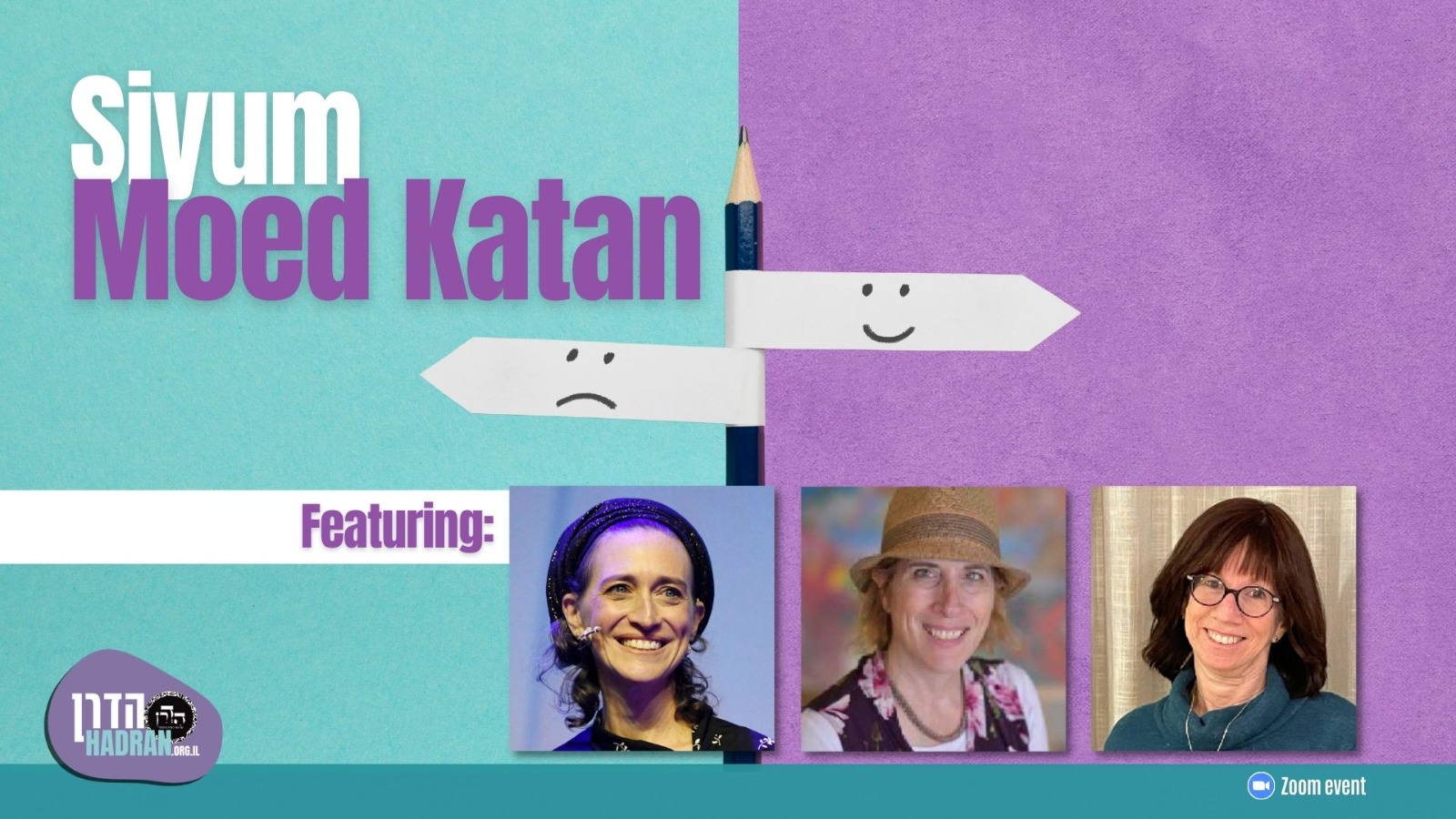Siyum Masechet Moed Katan is sponsored by Miriam Tannenbaum l’iluy nishmat Jack Zemsky, her father, Yaakov Yitzhak ben Moshe Nachum HaLevi and Miriam Esther z”l, whose 18th yahrzeit was yesterday, the 8th of Adar. “Our father’s life, like Moed Katan encompassed both the twinning of and the dialectic between simcha & aveilut. In dealing with life’s challenges, he both confronted them and chose to live a life of simcha. His service of Hashem was heavily influenced by those experiences and the teachings and simcha of Chassidut. Upon his passing in Chodesh Adar only days before Purim (that year), we felt it timely—as though he would have wanted the sadness to be somewhat muted at this joyous time of year. Yehi Zichro Baruch.”
Siyum Masechet Moed Katan is sponsored by Sara Berelowitz in memory of her mother-in-law, Sarah Tyba bat David Shlomo z”l.
The mourner gets treated with respect and is seated at the head – this derived from a verse in Job? A groom also sits at the head – this is derived from a verse comparing a groom to a kohen, who also sits at the head. The moment of death is described using imagery showing how difficult the moment is. What words should one use when parting with the dead? What words should be used when parting with one who is alive? These are derived from verses with God and Avraham, and Yitro and Moshe. The verse “Go from strength to strength” is explained in two different ways at the end of the Masechet – either one who goes from the shul to the Beit Midrash and the reverse or Torah scholars in general and it relates to this world and the next.
HADRAN ALACH MASECHET MOED KATAN – Download the text for the completion of the masechet: The Hadran.























